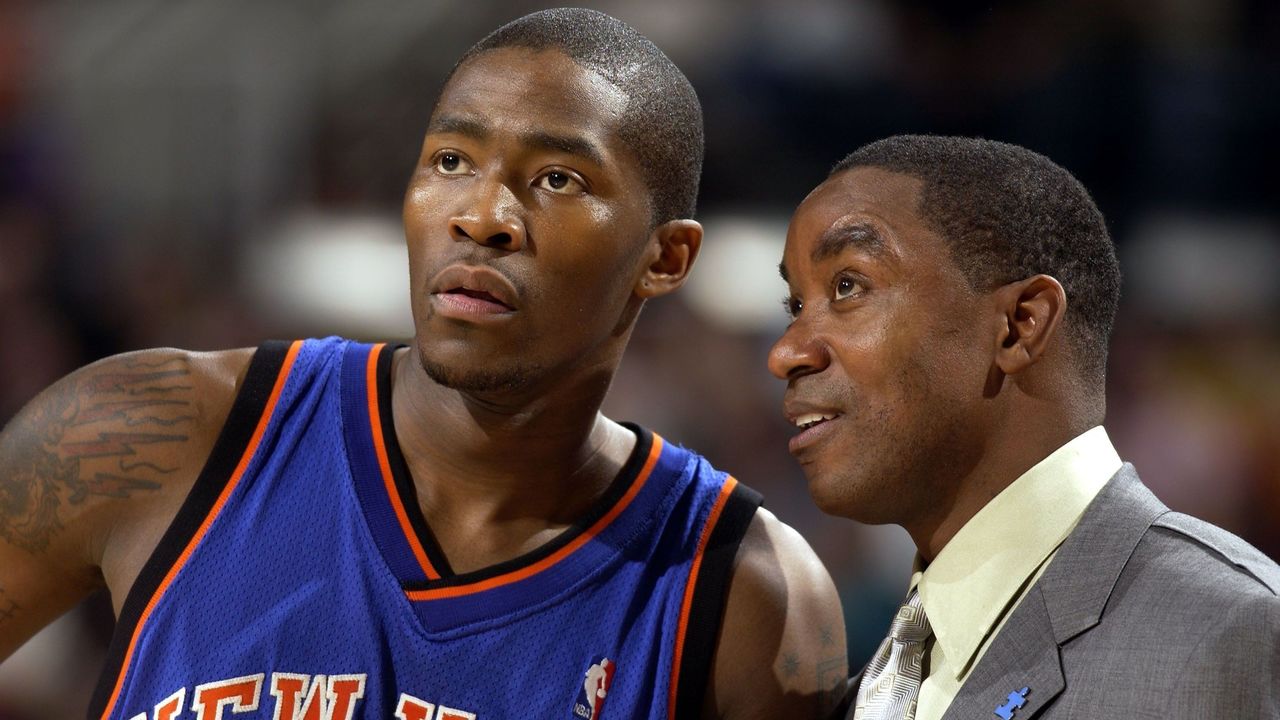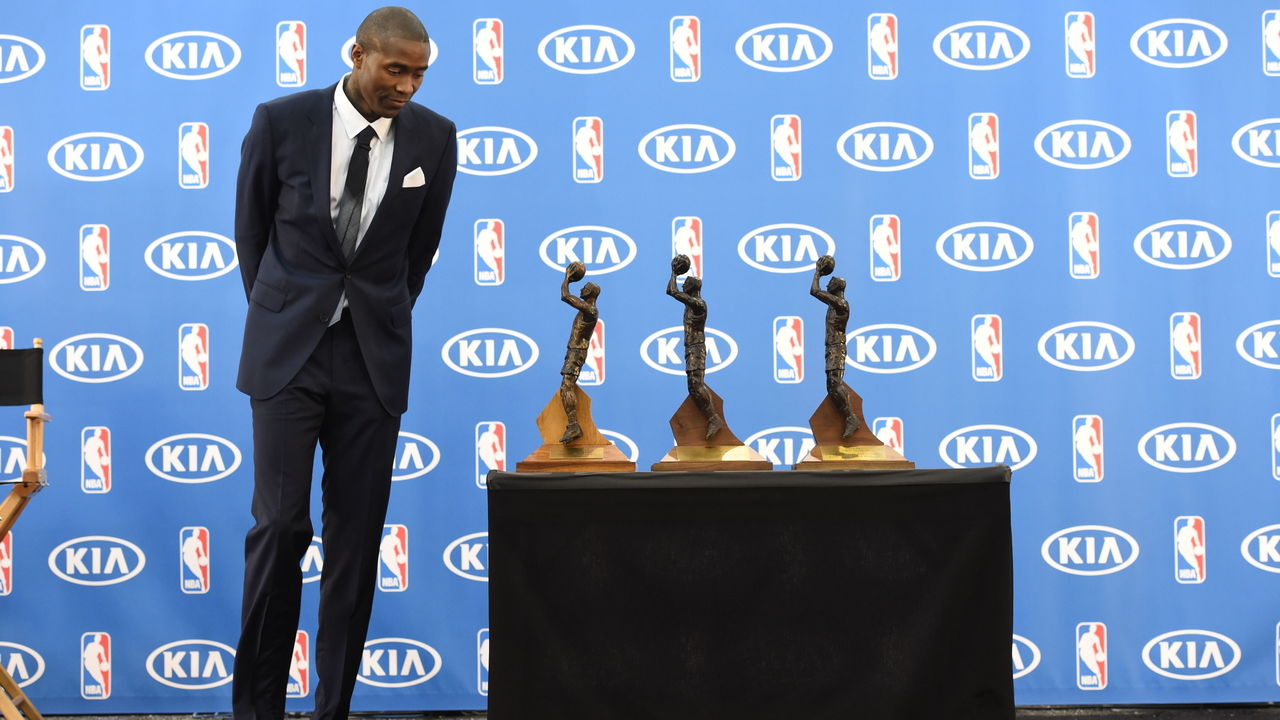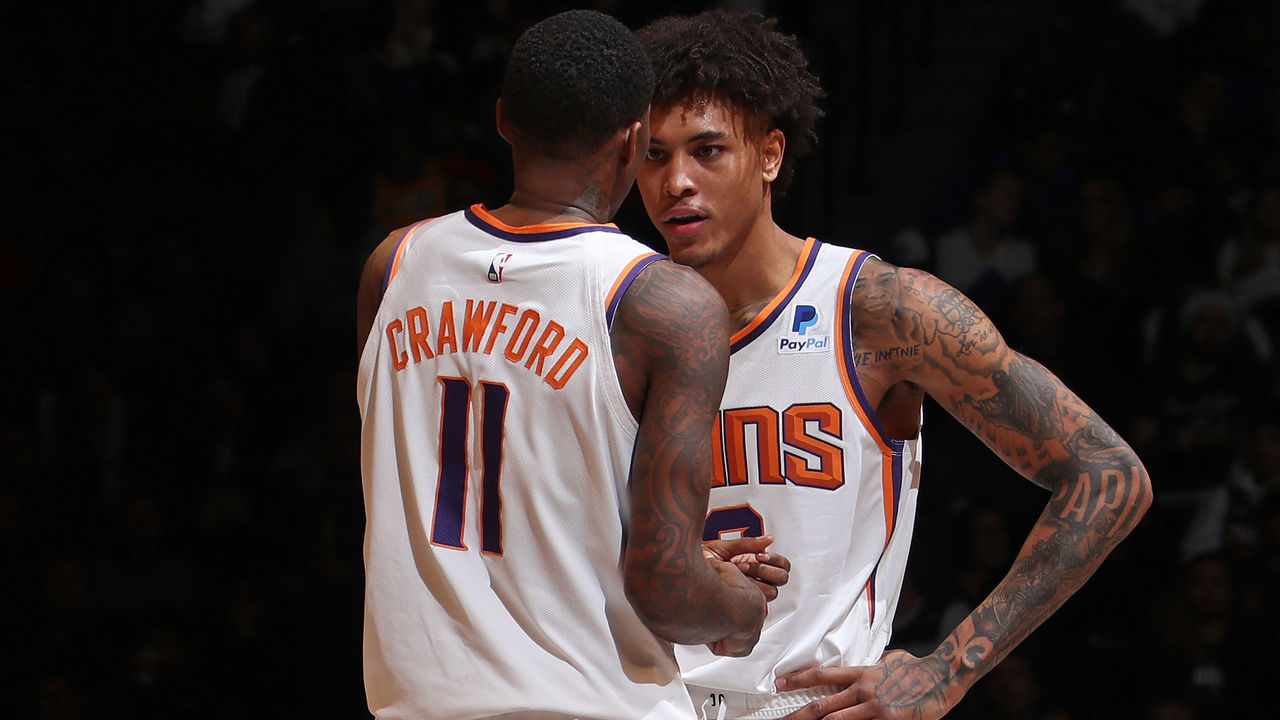How Jamal Crawford became the NBA's quintessential 6th Man
Phoenix Suns guard Jamal Crawford played his 1,300th game to such little fanfare, not even his own head coach knew about the milestone.
Crawford became just the 22nd player in NBA history to reach the 1,300-game plateau last Sunday against the Minnesota Timberwolves. But there was no celebration, no announcement in the arena, no acknowledgment from fans, and Crawford's achievement was barely mentioned on the broadcast. Suns head coach Igor Kokoskov, unaware of the benchmark, called it "trivia" when reminded of it earlier in the week.
Perhaps the muted reception reflects the underwhelming path Crawford is pursuing toward the end of an otherwise proud career. Crawford isn't ring chasing, as most other veterans would at his age. He's serving as an unglorified bench piece and is averaging six points and three assists for the forgettable Phoenix Suns in his 19th season.
Or perhaps there just isn't enough appreciation for what it means to be the best sixth man, because Crawford is undoubtedly one of the greatest to ever do it.
He's the only three-time winner of the Sixth Man of the Year Award, he's sixth all-time in 3-pointers made, and barring injury will finish top 20 in games played - somewhere between Artis Gilmore and Gary Payton - when the 2018-19 season ends. He's also just the second player ever to score 10,000-plus points off the bench.
"To be honest with you, it’s a lot harder coming off the bench than it is starting," Crawford recently told theScore. "Starting, you can feel your way through, you have a lot of time, you don’t have to rush. Coming off the bench, you have to make something happen, and once you do that, everyone knows you’re coming off the bench to make that specifically happen."

Nobody sets out to be a bench player, and especially not electric scorers like Crawford, who possessed the complete package coming out of college.
It became obvious during his lone season at Michigan that Crawford was destined to be an impact player. His skill level while leading the Wolverines in scoring was astounding. He could shoot from distance, he displayed a dizzying array of crossovers, and he was proficient at creating plays for his teammates. The Cleveland Cavaliers selected Crawford eighth overall in the 2000 NBA draft, and he was promptly traded on draft night to the Chicago Bulls.
His first few years in the NBA were beyond rough. Chicago was a muddled mess during the post-Michael Jordan years as the team struggled to find a new identity. Crawford, Tyson Chandler, and Eddy Curry were supposed to lead a youth movement, but it became hard to earn minutes when management kept cycling through inexperienced head coaches and aging veterans instead of developing for the future.
Crawford eventually grew into a potent scorer, but he was deemed expendable. Chicago posted an 89-239 record during his first four NBA seasons before trading him to the New York Knicks for Othella Harrington and Dikembe Mutombo, a pair of over-the-hill players.
The Knicks weren't any better. Crawford was the lone bright spot for the unmitigated disaster that was the Isiah Thomas era. Crawford's job was to prop up a pathetic roster filled with overpriced scrubs - Thomas famously paid Jerome James $30 million to average two points per game - and his legendary scoring bursts were the only reason to watch the team. Knicks fans still buzz about Crawford's 52-point performance at Madison Square Garden.
New York went 15-6 in games when Crawford scored over 30 points, and otherwise the team sunk to 97-190 over four seasons. And yet, in 2008 he was traded again, going to the Golden State Warriors, another perennial lottery team at the time.
Crawford flourished in Don Nelson's up-tempo system, but the Warriors were nowhere close to contending. Golden State ranked dead last during the 2008-09 season defensively, finishing with just 29 wins. The Warriors parted with Crawford after just one season, making room for rookie Stephen Curry.
By that point, Crawford had established himself as one of the most explosive players in the league. He became one of only four players in NBA history to score 50 points in a game as a member of three different teams, joining Wilt Chamberlain, Bernard King, and Moses Malone.
But it was also clear that Crawford couldn't be a franchise player. He was too inefficient to run an effective offense and didn't play enough defense to warrant being the No. 1 option on a playoff team.
Worse yet, Crawford had also developed a dubious reputation for putting up empty stats. He logged 679 regular-season appearances without playing a playoff game, which was the third-longest individual playoff drought in NBA history behind Otto Moore and Tom Van Arsdale.

When he arrived in Atlanta after an offseason trade in 2009, Crawford was ready for a change. The Hawks were coming off two straight playoff appearances, and Crawford wanted to be part of their success. So he volunteered to come off the bench.
"The last three years I started and averaged 20 points cumulatively," he said. "But I got to a point in my career where I was tired of losing, and I was going to do whatever it takes. I ended up getting traded to a team that made the playoffs the year before, and they already had their core and starting five intact, so I said I would come off the bench."
The new role stuck. Crawford finally made the playoffs that year while winning his first Sixth Man of the Year Award, and he never looked back. Everything sounds easy in retrospect, but moving to the bench was a difficult transition.
Crawford took the summer to prepare for the new role. He made a concerted effort to check into pick-up runs midway through the game to get a feel for jumping right into the action. But despite his best efforts, he still finished with just three points, and four fouls, in his Hawks debut.
The next morning, Hawks head coach Mike Woodson and starting shooting guard Joe Johnson sat him down for a talk. The message: Crawford didn't need to overthink anything or change his game to fit in. Those words stuck with him.
"They said, 'Be who you are, be the scorer,'" he recalled. "And from that point onward I averaged 18 per game, won Sixth Man of the Year, and it took on a life of its own."

Crawford eventually found a home with the Los Angeles Clippers in 2012, where he established himself as this generation's preeminent bench scorer.
He paid close attention to how Manu Ginobili and Jason Terry played their parts for championship-winning teams in San Antonio and Dallas. The commonality between those two was running the show with the second unit, but they were also on the floor with the starters to close out games.
Crawford sought to replicate that role for the Clippers, an emerging powerhouse. He never earned a ring for his efforts, but Crawford hit all the high notes - he drilled game-winners, went toe-to-toe with Kevin Durant in the playoffs, and orchestrated the signature play of the Lob City era.
Organizational politics, untimely injuries, and a lack of depth kept the Clippers from reaching the Western Conference finals, but Crawford did his part. He averaged 15 points per game over five seasons and added two more Sixth Man of the Year trophies to his collection.
Like most of the team's other core pieces at the time, Crawford's tenure with the Clippers came to a rude conclusion. Chris Paul left for Houston in a sign-and-trade deal, Blake Griffin was ditched in Detroit, JJ Redick and DeAndre Jordan walked in free agency, and Crawford was unceremoniously salary dumped and bought out by the Hawks to make way for Danilo Gallinari.
"To be honest with you, my whole career has been underrated, but my peers respect it and that’s good enough for me. I don’t do it for anybody else, I do it for the love of the game," said Crawford .

As his illustrious career winds down, Crawford is in a mentorship role for both the Suns and the next generation of players.
Kokoskov credits Crawford for rallying young players to come in during off days to get extra shots up. Crawford also stops practice at times to educate rookies on how to make a proper close-out, and he even participates in shell drills to teach defensive basics.
More importantly, the 19-year vet can still ball. Crawford is playing point guard for the second unit, and he set a new career single-game high with 14 assists during a game in December. Crawford even hit a game-winner against the league-leading Bucks to give Phoenix its most impressive victory of the season.
"Staying in love with the game (is the secret to longevity)," he said. "If you do that, you’re willing to do everything that comes with it. Whether it be cold tubs, foam rolls, extra shots, massage, acupuncture, whatever it might be, you want to do it because you love the game that much."
Part of loving the game is giving back to the next generation, and Crawford is happy to share his advice. The soon-to-be 39-year-old has inspired an entire generation of players who grew up watching his legendary crossover mixtapes on YouTube, and they're always trying to pick his brain.
"I never thought I would play with a legend like him," Suns forward Kelly Oubre Jr. said of Crawford. "He’s so humble that he doesn’t even realize what he has done in the NBA. Younger guys like myself and others look at him and it’s like, 'you’re a freaking legend.'"
Crawford might not agree, but he's thrilled about his profound impact on the next wave of NBA players.
"I know a lot of these guys were in middle school or high school when I was coming up, so a lot of them have seen me play," he said. "I’m one who wants to give back to the next generation to make sure the game is in good hands."